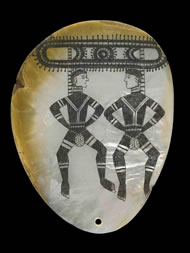The new Indigenous Australia: Enduring Civilisation exhibition at the British Museum is a wonderfully rich and emotionally powerful celebration of Australian Indigenous culture. It has to be seen.
The key to its power is to be found in the exhibition’s subtitle. Aboriginal civilisation has indeed endured – for over 40,000 years. It has survived the millennia – and, perhaps even more impressively, it has survived the cataclysmic encounter with a European colonial power that, for many years, failed to realise that it was a civilisation at all. This is something both inspiring and poignant.
Throughout the 250-year history of White Australia, the continent’s Indigenous peoples have been variously viewed as a primitive curiosity, an inconvenient obstacle, a doomed irrelevance and a stubborn embarrassment. They have, by turns, been patronised, deracinated, killed (both accidentally and deliberately) and ignored. It was only in 1967 that Indigenous people were finally given Australian citizenship – a first small step towards a greater understanding and appreciation of their culture.
Although, traditionally, much of what Aboriginal peoples created for ceremonial (or, indeed, practical) purposes was ephemeral, some of it was anything but. Examples of rock-
paintings and petroglyphs survive dating back across the millennia, and these reveal iconographies and concerns that still endure in the Aboriginal art of today. This exhibition abounds with telling echoes, such as the 1960s bark-painting of a barramundi that follows the same outlines as a rock-painting from the Ice Age, or the 19th-century wooden shield decorated with a similarly ancient white-hand motif. It is an extraordinary tale of continuity.
The show makes clear the diversity of Australian Indigenous culture – or cultures. There are many very different ways of looking at things and representing things, from the great dotted canvases of the desert peoples (seemingly abstract, yet full of significant meaning), to the ‘X-ray’ vision of the northern bark-painters, to the richly carved artefacts of the Torres Strait Islanders (including a stupendous turtle-shell mask).
All of them, though, are united by a common reverence for the land – a sense of its spiritual power and its life-giving force. The creation myths, or Dreamings, telling of how the Earth – and the Heavens – were created by various ancestral beings travelling across the landscape, inform all the magnificent painted works in the show. Many of these pictures were produced in the last couple of decades. This is a living tradition.
Several artefacts, though, are very much older. Coming from the British Museum’s collection, they date back to the early colonial period. There are shields, boomerangs, painted pieces of bark. This has prompted a predictable chorus from some sections of the Indigenous establishment for their ‘return’ (although exactly to whom, or to where, is often unclear). But, by and large, these were objects meant for use. They were not meant to endure. And they would certainly not have survived, but for their preservation in the museum’s collection. It is good that they are available to enrich such an exhibition as this. And to make clear that many of the cultural impulses that inspired their original creation still continue: that here, indeed, is an Enduring Civilisation.
The exhibition Indigenous Australia: Enduring Civilisation continues at the British Museum until 2 August 2015. www.britishmuseum.org








